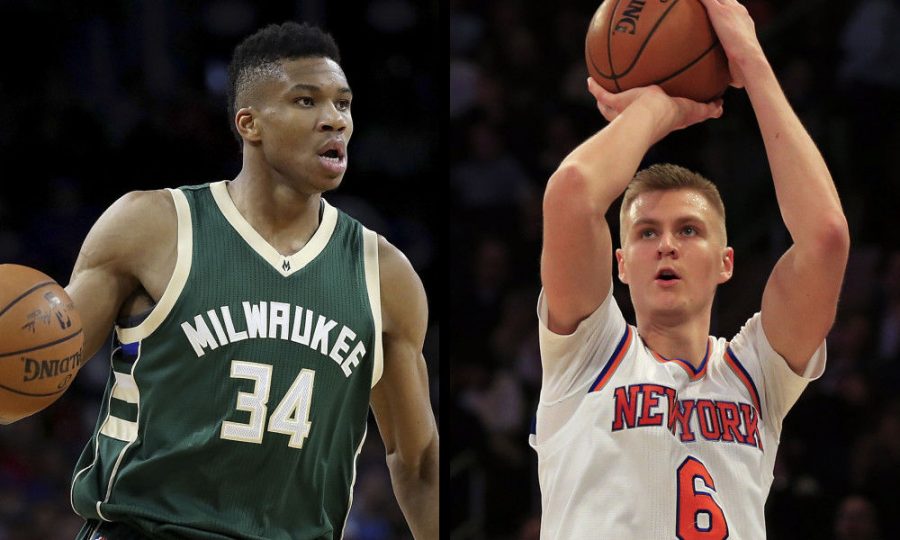Small ball: A new way of life in basketball
November 15, 2017
Whenever I watch NBA games and see Kristaps Porzingis shooting from 40 feet or LeBron James and Ben Simmons playing point guard, I know that the game of basketball is changing.
The idea of having a traditional low-post center, who can score and defend in the paint, is becoming a thing of the past as the Golden State Warriors’ small ball, fast pace style is taking over the game.
Today’s NBA forwards and centers must have a resume that includes three-point shooting and versatility on both ends of the floor. Milwaukee Bucks’ forward Giannis Antetokoumpo, who stands at a towering 6 foot 11 inches tall with a 7-foot wingspan, has graced basketball fans with his guard-like passes, aggressiveness on the boards and versatile scoring.
Even Philadelphia Sixers center Joel Embiid has the capability to handle the ball and shoot from the three-point line.
This small ball revolution isn’t just happening in the NBA. It has taken over the college and high school game as players are evolving and finding different ways to enhance their skillset.
“I think it’s great for the game,” Monmouth head coach King Rice said. “I think kids are working on different skills whereas back in the day, the big man was under the basket.”
As ESPN’s Basketball Insider Jeff Goodman pointed it out in his college basketball column: “this will be the year of the big man.” He wasn’t talking about a Shaquille O’Neal type player – he was referring to forwards and centers in college basketball, who can stretch the floor and score outside of the paint.
There’s a handful of stretch four or fives in college basketball that has the potential to be NBA stars. Duke freshman Marvin Bagley, who scored 25 points and 10 rebounds in his college debut, is regarded as a top five pick in the upcoming NBA Draft. Bagley is 6 foot 11 inches tall and listed as a forward/center. However, he can play almost every position on the court since he can score at different angles and run the floor like a guard or small forward.
University of Texas freshman Mohamed Bamba, who has a 7 foot 9 inch wingspan, is known for making outside shots and being a tremendous shot blocker on the defensive end. Then there’s Arizona’s DeAndre Ayton, Kentucky’s Kevin Knox and Michigan State’s Jaren Jackson Jr. Each of those players have the skillset to succeed in the what I like to call the “Small Ball Era.”
For most of these players to be underclassmen shows the change in the game and what is being taught on the high school level.
Iona men’s basketball head coach Tim Cluess notices that college and NBA teams are converting to the small ball style or having a pair of stretch fours in their lineup. On the other hand, Cluess has been playing and coaching this way his entire career.
“My teams have played that way for 30 years,” Cluess, who coached former Iona forwards Jordan Washington and David Laury, said. “It was the way I played and coached in high school. I always thought it was the best way to play basketball.”
Even though it feels like traditional low-post centers are becoming extinct, coaches still look for players that can score and defend at a high-level.
“I’m a basketball fan so I always think there is more than one way to play,” Rice said. “I think coaches would use big men if they find one that can score on the block. We all want one.”
It’s safe to say that the small ball revolution is in full effect and it’s time to jump on board.









